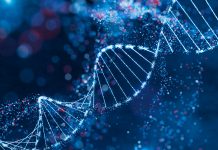Members of the Breast Cancer & Environment Research Program walk us through what we need to know about oestrogen signalling, including environmental chemicals & links with breast cancer
Breast cancer is the most common malignancy diagnosed in women in the United States and Europe. The discovery of mutations affecting the BRCA1 and BRCA2 genes in the mid-1990s highlighted the role of inherited breast cancer risk and provided new hope to understand who is at risk and how to prevent breast cancers. However, more than 70% of breast cancer risk is due to environmental factors that include reproductive history, lifestyle factors, and exposures to environmental chemicals. The role of environmental factors is especially striking in countries with developing economies where mortality from breast cancer was uncommon (<5/100,000) before 1950 but has doubled over the ensuing decades. Therefore, prevention strategies are important for reducing the incidence and mortality due to breast cancer. However, identification of the environmental factors that affect one’s risk of breast cancer has been elusive as highlighted in the NCI PDQ.

Oestrogen signalling, chemicals & breast cancer
Cellular signalling through oestrogen receptors in breast tissue appears to be a key mechanism through which a variety of environmental factors can act to either promote or prevent breast cancers. Oestrogens bind to receptors within a subset of breast cells and activate the expression of a host of genes needed for the normal development and function of breast tissue. However, higher levels of circulating oestrogens and longer duration of exposure (for example, earlier menarche and later menopause) are associated with increased risk of breast cancer. Conversely, lowering levels of oestrogens by surgery or oestrogen-blocking drugs reduces the incidence of breast cancer.
A class of environmental chemicals, referred to as xenoestrogens, can also bind to oestrogen receptors and elicit oestrogen-like effects. These chemicals include components in plastic products (bisphenol A, BPA), personal care products (parabens, PP; benzophenones, BP3), flame retardants (polybrominated diphenyl ethers, PBDEs), combustion products (polycyclic aromatic hydrocarbons, PAHs) or heavy metals that are often found in drinking water and air pollution (cadmium, arsenite). These environmental xenoestrogens can amplify cellular signals in the breast leading to prolonged effects that are similar to oestrogen, and thus, increase the risk of breast cancer.
However, xenoestrogens most often bind weakly to the oestrogen receptor and can distort the effects of oestrogens eliciting a partial or aberrant response. Xenoestrogens are part of a larger group of environmental contaminants that are referred to as endocrine disruptors because they perturb the synthesis of hormones such as oestrogen (Cardona and Rudel, 2021)1 or alter the normal functions of various hormones in the bodies of people and animals. Population-based surveillance data show that these oestrogen-like chemicals are present at detectable levels in the majority of women. Although exposures to ubiquitous environmental sources of oestrogen-like chemicals can contribute to the burden of breast cancer, affecting one in eight women in the U.S., definitive links to breast cancer have remained elusive.
Studies in rodents provide insights into the mechanisms by which environmental xenoestrogens act as well as the challenges in translating the data to humans. Exposure to environmental xenoestrogens during specific periods of breast development can greatly affect the consequences of that exposure. The rapid development of breast tissue during puberty and maturation during pregnancy is easily perturbed by environmental xenoestrogens and can alter the incidence of breast cancers. Low levels of arsenite and cadmium have oestrogen-like activity in rats and result in the earlier onset of tumours (Divekar et al., 2020)2. Low levels of BP3 and PP can bind to oestrogen receptors and directly damage DNA in breast cells in the absence of proliferation (Majhi et al., 2020)3. These laboratory studies demonstrate a new mechanism by which chemicals can preferentially damage breast cells that would be overlooked in typical measures of xenoestrogen activity. BP3 also has tumour-promoting effects in mice but is evident only in mice fed a high-fat diet (Kariagina et al., 2020)4. Using a surgical model of menopause in mice, PBDEs can expand the population of cells that are responsive to oestrogen and most susceptible to forming tumours (Kanaya et al., 2019)5. Therefore, a variety of chemicals that are common in our daily environment have the potential to cause breast cancer in rodents.
Research challenges ahead
Efforts to apply the results from laboratory model systems to women remain an important challenge. To determine if there is variation in the sensitivity to chemical exposures, researchers have created “families” of closely related rodents, referred to as strains. Studies in different strains of rats and mice have identified genetic differences that render some strains susceptible to mammary tumours when treated with chemicals while the majority of strains remain unaffected (Jerry et al., 2018)6.
Similarly, in humans, environmental xenoestrogens may pose a minimal risk to most women, however, the chemicals can dramatically increase breast cancers among a subset of susceptible women. By examining a combination of genetic risk with other risk factors, PAH exposure was linked to a four-fold higher risk of breast cancer among women already at greater risk (Shen et al., 2017)7, but not among women who had an average level of risk of breast cancer. Translating results from rodent studies to humans is also challenging due to the difficulty in determining exposures that occur over decades during a woman’s life. Breast density and epigenetic fingerprints are being used as surrogate measures to interrogate prior exposures to environmental chemicals.
Improvements in both monitoring exposures to complex mixtures of environmental chemicals and refining biomarkers of their effects in human tissues are needed. Although endogenous oestrogens play a major role in the development of breast cancer, it is important to recognise that seven of eight women never develop breast cancer despite being exposed throughout their lifetimes. Innovative methods are required for measuring chemicals in large populations over long periods of time and identifying mechanisms that determine risk and resistance to breast cancer.
Efforts to identify sources of environmental breast cancer risk and implement prevention strategies can lead to dramatic reductions in the burden of breast cancer. Laboratory model systems and population studies designed in parallel are needed to more rapidly assess risks posed by environmental chemicals (Terry et al., 2019)8. Both scientific approaches are enhanced when planned, conducted, and results are disseminated in partnership with breast cancer advocates and stakeholders. The weight of evidence from this translational science approach provides guidance for decision-making by individuals and protective actions by regulatory agencies.

Breast Cancer & Environment Research Program members
Richard C Schwartz and Sandra Haslam
Mary Beth Terry and Rachel Miller
Karin B Michels, Camila Corvalan, Julia Brody, and Jose Russo
Marybeth Martin and Celia Byrne*
Shiuan Chen and Susan Neuhausen
Amy Trentham-Dietz and James Shull
*Disclaimer
The views expressed are those of the author(s) and do not necessarily reflect the official views of the Uniformed Services University of the Health Sciences or the Department of Defense.
References
- Cardona and Rudel, 2021
- Divekar et al., 2020
- Majhi et al., 2020
- Kariagina et al., 2020
- Kanaya et al., 2019
- Jerry et al., 2018
- Shen et al., 2017
- Terry et al., 2019
Please note: This is a commercial profile
© 2019. This work is licensed under CC-BY-NC-ND.











